Born in 1890, Alfons Mucha became a world-famous artist, illustrator, and one of the most important representatives of the Art Nouveau style. But he saw his artistic life and purpose in another, much more serious work: the Slavic Epic. Mucha devoted a remarkable 17 years of his own life to this masterpiece and even secluded himself from society in a remote castle.
It all started with a letter
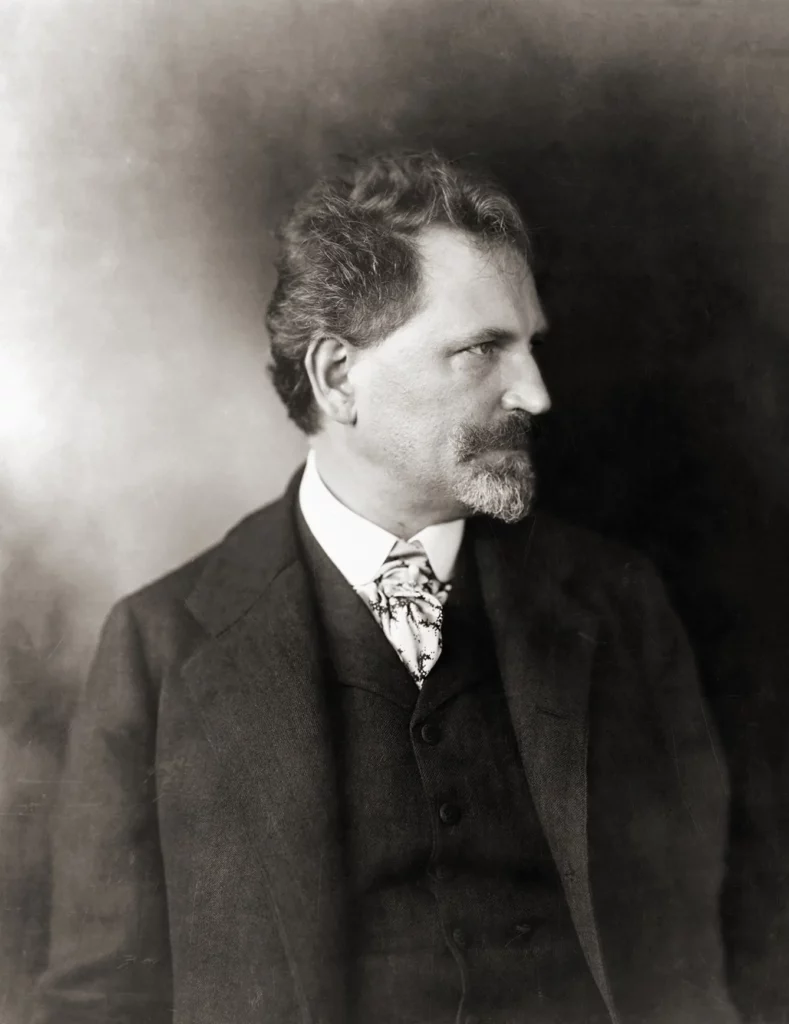
One autumn day in November 1909, the mayor of Prague received a letter from Alfons Mucha, by then already a well-known painter and artist. Its wording was very straightforward. It was an offer of a gift to the city of Prague in the form of a series of 20 large paintings called the Slavic Epic.
The offer couldn’t have been more lucrative. Mucha would paint the pictures at the expense of a wealthy American patron named Charles R. Crane. Crane admired Mucha’s work, was a lover of Czech and Slavic culture, and was also a close friend to Tomáš Gariggue Masaryk, the future first president of Czechoslovakia. Mucha’s only condition was that Prague would build or arrange a suitable building at its own expense for the permanent storage and display of the paintings.
Not surprisingly, the city council unanimously accepted Mucha’s proposal at its next meeting. The city reaffirmed its commitment several times, and in 1913 (two years into Mucha’s work), a Memorandum of Undertaking was officially signed. Mucha undertook to create the work, Crane paid him £100,000 as a fee, and the City of Prague committed to take possession of the paintings and place them in a purpose-built/selected gallery.
An epic work
As mentioned at the beginning, the paintings took 17 long years to complete: from 1911 to 1928. Alfons Mucha aimed to summarize the history of the Slavic peoples in 20 large paintings, from their departure from the Slavic ancient homeland to the historically younger significant events.
From Czech history, we can mention, among others, a painting with the theme of the sermon of Master Jan Hus or a canvas depicting the Czech Hussite king George of Poděbrady. From Polish history, Muchal described the Battle of Grunwald, in which the Polish armies were victorious over the Teutonic Order of German Knights. The history of Croatia is depicted by the defense of Europe against the Turks, led by the Croatian nobleman Mikulas Šubič Zrinský.
From Serbian history, Mucha recalls the coronation of Štěpán Dušan IV., who was crowned tsar in Serbia and Greece in 1346 and enforced an updated law code throughout Europe. He then pays tribute to Bulgarian history with the image of Tsar Simeon I, who, in addition to being a skilled military leader, was a great scholar and contributed to the flourishing of Bulgaria.
A complicated creation and an even more complicated fate
For the entire period of the creation of the Slavic Epic, Alfons Mucha retreated to Zbiroh Chateau, which was historically a vital castle protecting trade routes from Germany. There, for 17 years, he created his monumental work, which he gradually handed over to the capital city of Prague. This separation from civilization and a flurry of books and historical texts suited Mucha. He finally had peace to work in.
The first paintings were exhibited for the first time in 1919 in Klementinum, and eleven canvases were exhibited in 1920 in Chicago and New York, where tens of thousands saw them in three months.
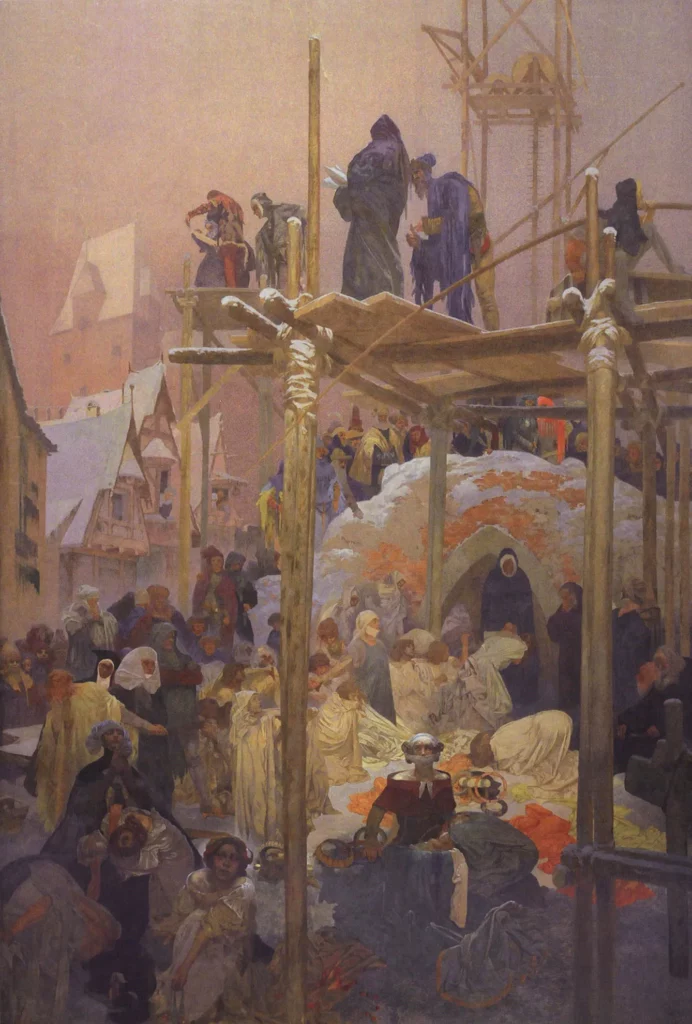

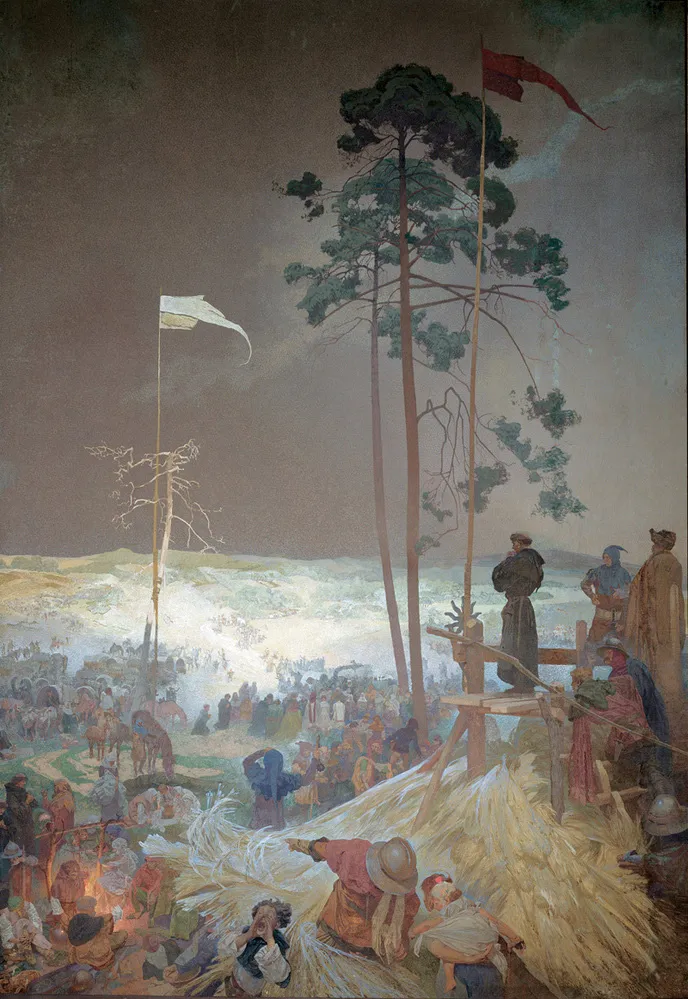
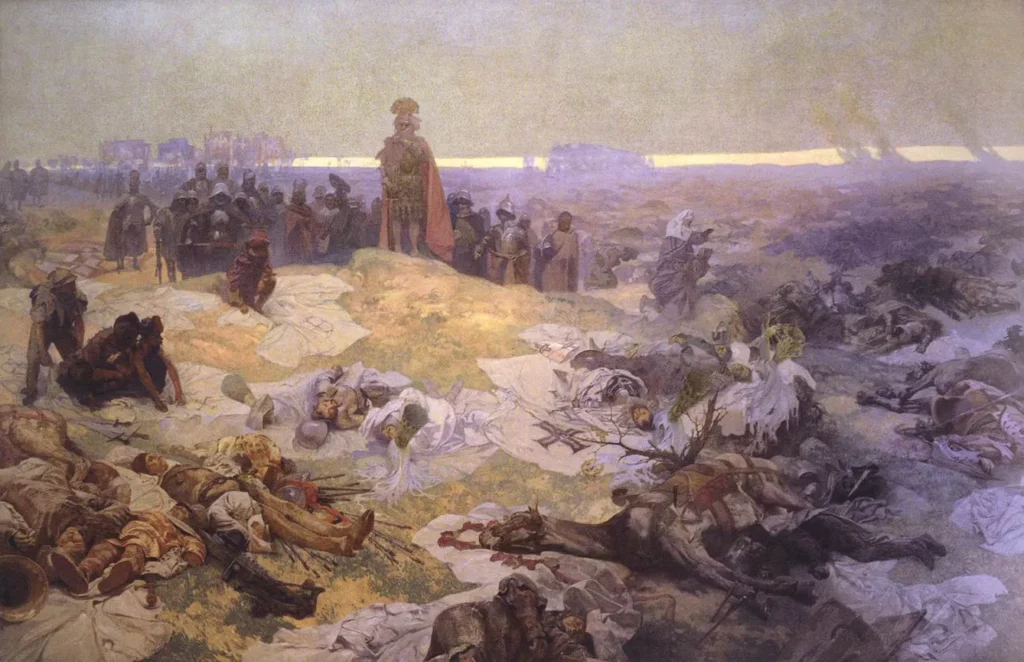
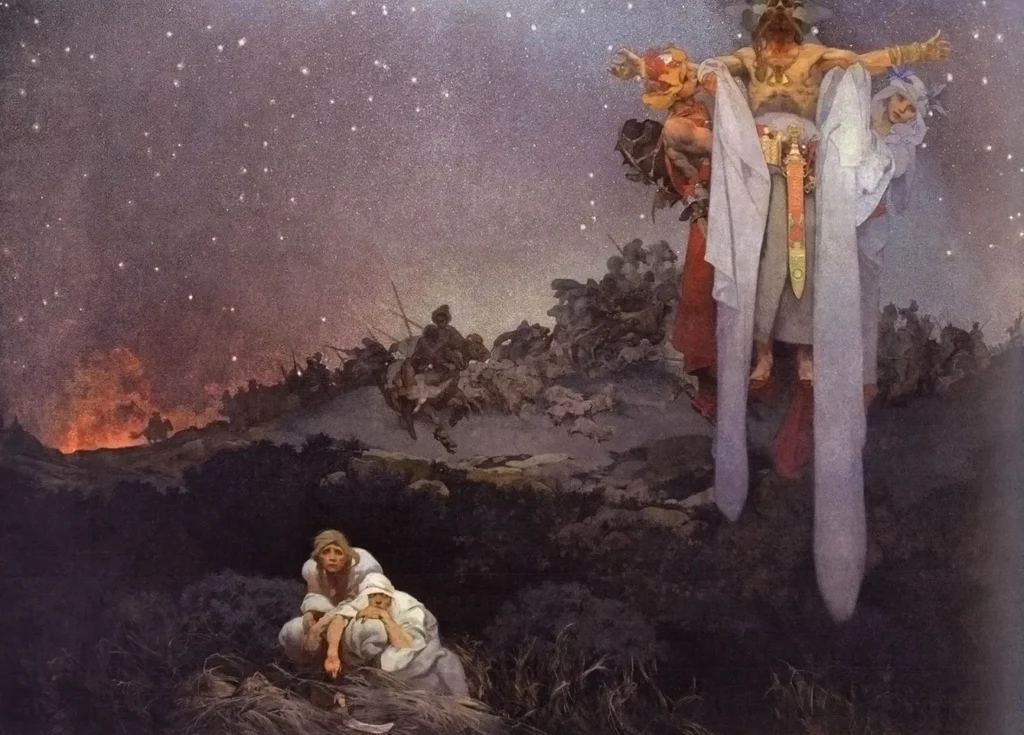

All 20 canvases were first presented together as a series in 1928 on the occasion of the opening of the new Prague Exhibition Palace. All 20 canvases were first introduced as a series in 1928 on the occasion of the opening of the new Prague Exhibition Palace. Alfons Mucha and Charles Crane officially handed the Slavic Epic over to Prague and all the Czechoslovak people there. Since then, the Epic has traveled around Czechoslovakia and the world.
During the years when the Epic was being created and even after its completion, however, the City of Prague was unable to meet the condition to which it had committed itself: to provide an exclusive and dignified exhibition place for the paintings. And sadly, this condition was not fulfilled to this day.
Old disputes and new voyages of Slavic Epic
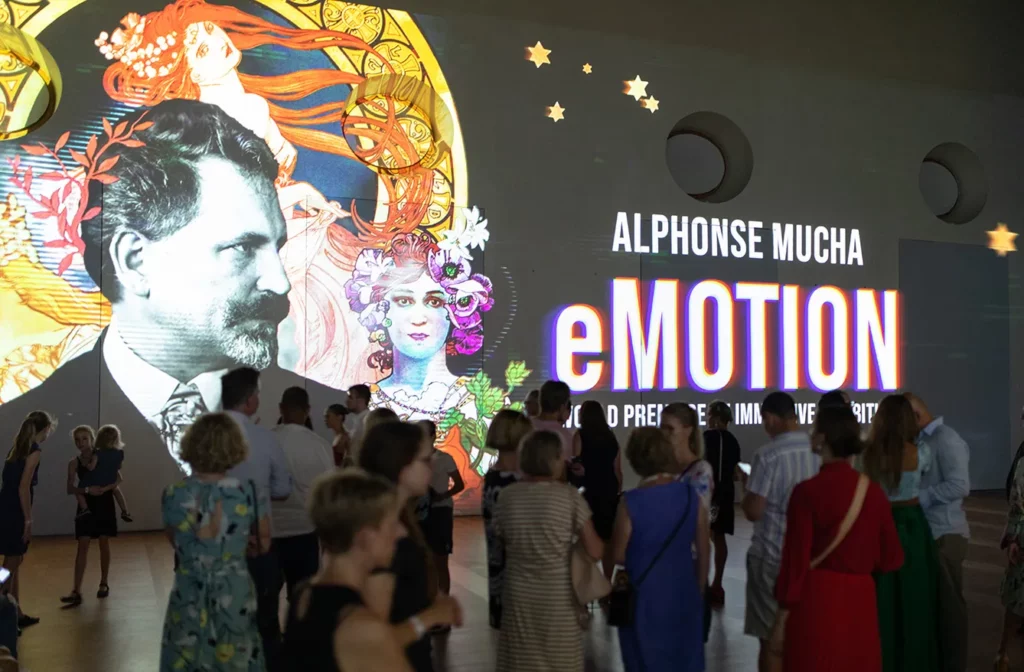
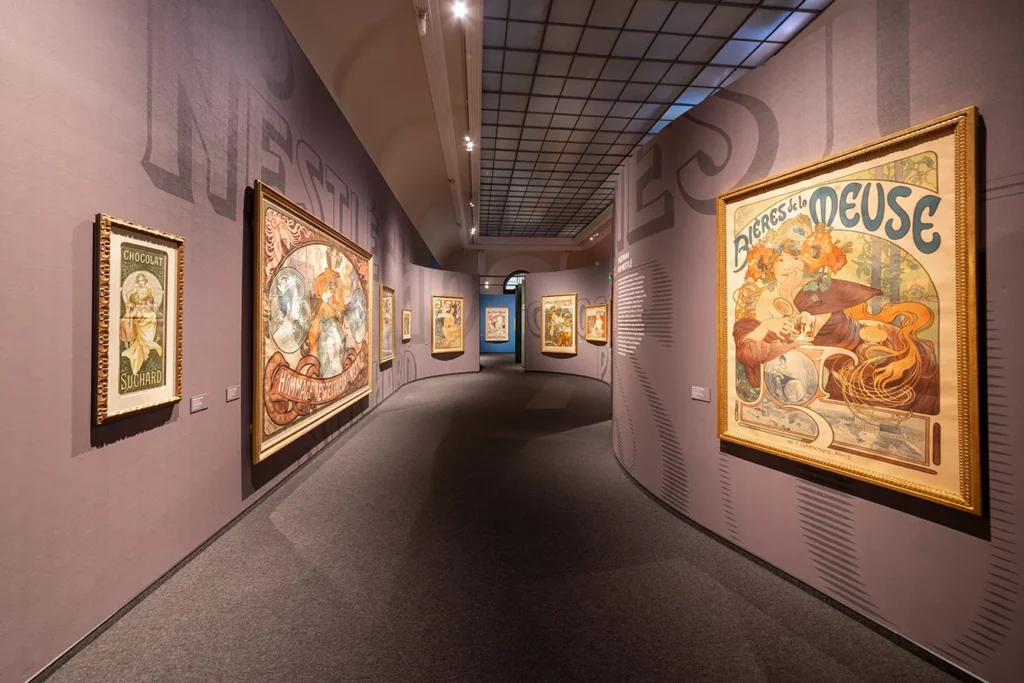
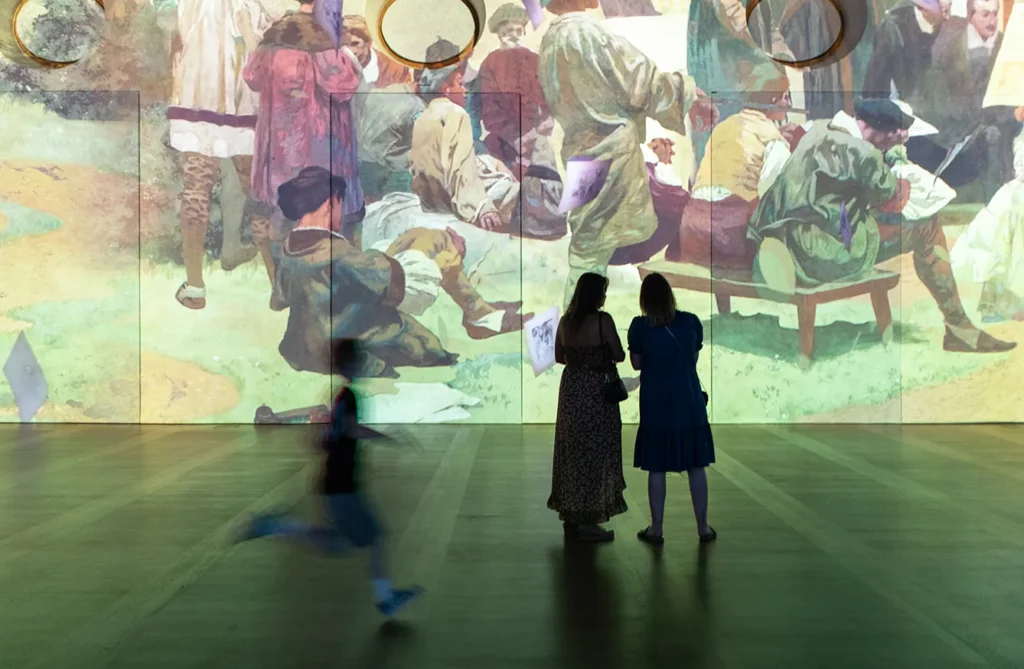
A unique exhibition of Alphonse Mucha, “iMUCHA – A Famous Collection in Motion.” Photos: NFRF
Alfons Mucha retained the copyrights to the paintings for himself and his family until his condition was fulfilled. Now John Mucha, the grandson of Alfons Mucha, owns the rights to the Slavonic Epic. It was John Mucha who, in agreement with the city of Prague, had now found a worthy place where the Epic could be exhibited.
The location should be Prague’s Savarin Palace on Václavské náměstí, in the very heart of Prague. After decades, the unfulfilled promise that led to the Epic being exhibited outside Prague will be fulfilled.
The Epic has also embarked on a significant Asian tour in recent years, the highlight of which was an exhibition at the Japanese capital, Tokyo. It has been a massive success in Japan. Until then, the Japanese knew Mucha more as an illustrator and painter of smaller paintings. The Epic was a marvelous discovery for them and sparked a new wave of interest in Mucha in the land of the rising sun.
As for the future, it seems that it has already been sealed. The Epic will have a dignified exhibition space, and what’s more, it has recently even come to life thanks to the interactive and digital show iMucha. John Mucha will be able to rest after decades of caring for his grandfather’s artworks, and Prague will fulfill its promise and become the rightful owner of the series that traces the history of all Slavic people.







